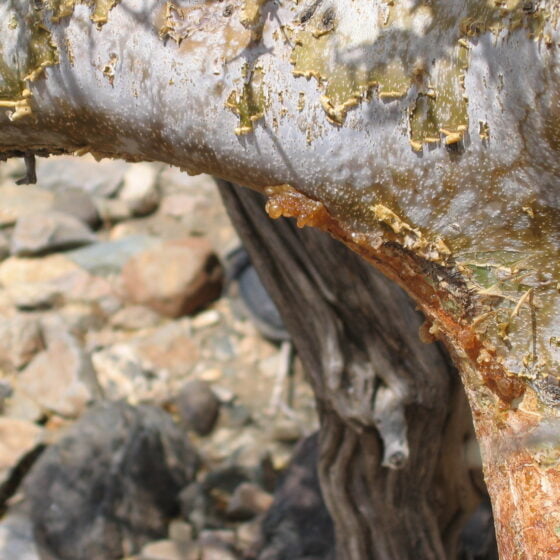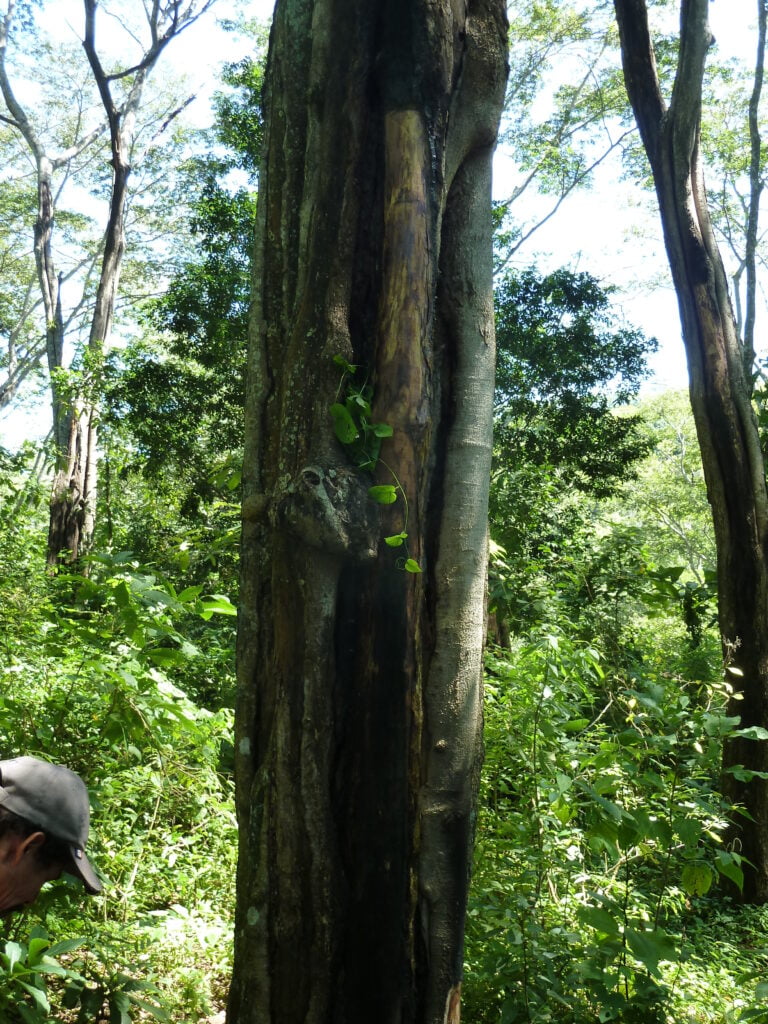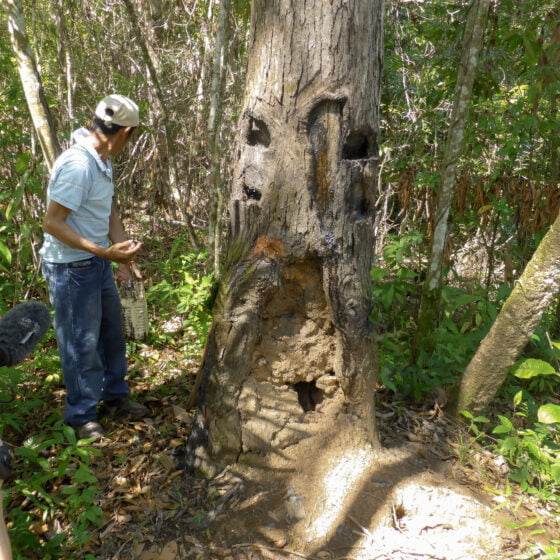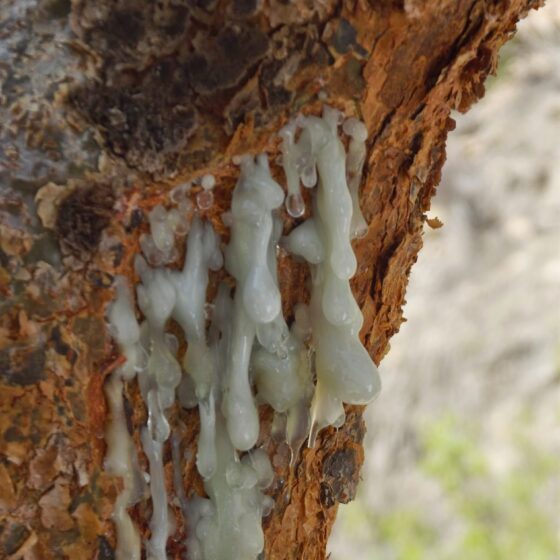
Peru balsam El Salvador
Myroxylon pereirae
General data
Harvest Calendar
- J
- F
- M
- A
- M
- J
- J
- A
- S
- O
- N
- D
Product details Our added value
Albert Vieille had been deeply involved with the Natural Resources Stewardship Circle for a number of years, supporting the association’s initiatives in the Peru balsam sector in El Salvador. The project’s objective was to develop a structured, sustainable supply chain. The progress are notworthy, including drafting a guide on proper collection practices and holding awareness-raising and technical training workshops to improve the balsameros’ safety. We are now pursuing awareness-raising actions with our historical partners, in particular by promoting the improvement of balsameros’ safety. We process the balsam ourselves at our production center in Seville.
Fragrance side
Peru balsam is used in the heart of orientals to accompany vanilla and woody accords. Its gourmand facet blends perfectly with chocolate and caramel accords. The more cinnamic and animal notes add a rounder touch to tobaccos and leathers.
About
A native of El Salvador, this monumental tree stands 25 meters high and is predominantly found in the Cordillera del Balsamo, the mountain range in the northwest of the country. A member of the Leguminosae family, Balsam of Peru’s botanical name is Myroxylon pereirae. In the wild, it grows at altitudes of 600 to 1,500 meters. Its common name comes from the colonial era, when the balsam was exported from Peru to Europe for its fragrance and medicinal qualities. When wounded, the tree’s trunk and branches exude a thick, brown, fragrant resin via many secretory ducts, which heals its bark Legend has it that the tree sprang up from the blood of Princess Nahuat that was shed in battle. Its resin is thought to have the power to heal wounds!
During the harvest, the balsameros scale the trees with a rope to remove pieces of bark. The wound is burned with a flaming stick to stimulate exudation of the balsam. The balsameros (harvesters) apply cloths to the incision to absorb the secreted balsam. After a few weeks, the cloths saturated with the precious resin are pressed and the balsam filtered.
Our added value
Albert Vieille had been deeply involved with the Natural Resources Stewardship Circle for a number of years, supporting the association’s initiatives in the Peru balsam sector in El Salvador. The project’s objective was to develop a structured, sustainable supply chain. The progress are notworthy, including drafting a guide on proper collection practices and holding awareness-raising and technical training workshops to improve the balsameros’ safety. We are now pursuing awareness-raising actions with our historical partners, in particular by promoting the improvement of balsameros’ safety. We process the balsam ourselves at our production center in Seville.
Fragrance side
Peru balsam is used in the heart of orientals to accompany vanilla and woody accords. Its gourmand facet blends perfectly with chocolate and caramel accords. The more cinnamic and animal notes add a rounder touch to tobaccos and leathers.
About
A native of El Salvador, this monumental tree stands 25 meters high and is predominantly found in the Cordillera del Balsamo, the mountain range in the northwest of the country. A member of the Leguminosae family, Balsam of Peru’s botanical name is Myroxylon pereirae. In the wild, it grows at altitudes of 600 to 1,500 meters. Its common name comes from the colonial era, when the balsam was exported from Peru to Europe for its fragrance and medicinal qualities. When wounded, the tree’s trunk and branches exude a thick, brown, fragrant resin via many secretory ducts, which heals its bark Legend has it that the tree sprang up from the blood of Princess Nahuat that was shed in battle. Its resin is thought to have the power to heal wounds!
During the harvest, the balsameros scale the trees with a rope to remove pieces of bark. The wound is burned with a flaming stick to stimulate exudation of the balsam. The balsameros (harvesters) apply cloths to the incision to absorb the secreted balsam. After a few weeks, the cloths saturated with the precious resin are pressed and the balsam filtered.
Other type of extracts
(Balsamic)


